-
 "Biopolitical dissection 1, the Young girl as compact ideological device.", 2018. Joan Pallé. Fotografia cortesia de Roberto Ruiz
"Biopolitical dissection 1, the Young girl as compact ideological device.", 2018. Joan Pallé. Fotografia cortesia de Roberto RuizTot allò personal és polític
Alessandra TronconeRecentment, gràcies a algunes lectures selectives, me he creuat diverses vegades amb l’eslogan “tot allò personal es polític”, un lema feminista popular de la segona meitat dels anys seixanta que després va ser el títol d’un assaig de Carol Hanisch en 1970. Encara que perfectament emmarcada en les propostes d’aquells anys, m’agradaria intentar treure-la del seu context concret i utilitzar-la com a punt de partida per una reflexió personal sobre la relació entre art i política, tal i com em demanà Miguel Ángel, a qui li agraïsc esta invitació.
-
 I Mostri, 2021. Alán Carrasco. Fotografia cortesia de Roberto Ruiz
I Mostri, 2021. Alán Carrasco. Fotografia cortesia de Roberto RuizClarobscurs
Antonio TocaVa ser en l'ARCO d'estiu, aquell ARCO tan desitjat i emmascarillat del 2021, quan Miguel Ángel em va enfrontar amb l'obra “I Mostri” d'Alán Carrasco. Tres petites fotografies en blanc i negre, amb una irregular franja blanca que les travessava, que contenien milers de petits cossos en formació.
Què era allò?, què representava? No era capaç d'identificar-ho, però, alguna cosa dins de mi em deia que sí ho reconeixia. De sobte vaig sentir una sacsejada, un xoc. El passat, el present i el futur s'atropellaven en un espai atemporal, en un buit d'aquí i ara. Allò eren un estadi ple milers de camises negres perfectament alineats, mirant cap a un punt concret. Em miraven a mi?
-
 María María Atcha-Kutscher, It took years to get a head full of silver strands, 2024
María María Atcha-Kutscher, It took years to get a head full of silver strands, 2024Una dona en la seva plenitud
Sema D'AcostaL'ésser humà és dels pocs mamífers que té menopausa, a més d'algunes balenes i un tipus concret de ximpanzés. Sembla lògic deduir que això succeeix en espècies que es caracteritzen per una esperança de vida prolongada, en les quals dilatar la durada reproductiva de les femelles adultes pot entrar en competència amb les més joves. Sigui pel que sigui, en la nostra societat ha ocorregut habitualment que quan les dones deixen de tenir la menstruació, quan ja no poden engendrar fills, entren en un territori de boira on l'entorn cada vegada les considera menys, en tots els sentits. Es fan transparents, estranyament, en l'àmbit personal i en el laboral. En el món d'avui, aquesta invisibilitat és un tema del qual no es parla amb la suficient força, almenys fins fa unes dècades, quan especialistes com Anna Freixas han començat a difondre sobre això amb naturalitat. Precisament les últimes sèries de la María María Acha-Kutscher (Lima, Perú, 1968) posen el focus en aquesta situació vinculada a l'envelliment femení, un assumpte que serveix de teló de fons per als seus projectes Recuerdo las noches cuando solía dormir (2023), En el fondo del espejo me acecha la vejez (2024), Toma años llenar una cabeza de hebras plateadas (2024)[1].
-
 Fábio Colaço, Faust, 2024
Fábio Colaço, Faust, 2024Dogma, incertesa iconoclasta
Paulo MendesEntres en una galeria, entres a casa, entres en la caverna, entres en la gruta, entres en el cau, entres en un forat. Ens rep l'Artista-Banquer, acaparador, comerciant de conceptes i preceptes, sobre el bé social, realitza transaccions en el seu banc habitual, Faust Enterprises Unlimited Inc. Ficcions socials sobre el pas del temps, nàixer per a ser ric o pobre, treballar per a viure, la vida és un compromís amb el Credit, viure és car.
-
 Robert Filliou, Optimistic Box #1,, 1968
Robert Filliou, Optimistic Box #1,, 1968Dins de Optimistic Box: art, conflicte i resistència
Esmeralda Gómez GaleraM'agrada pensar que la pràctica artística ens dota d'una capacitat i una via per a reflexionar sobre el món, abordar els seus problemes (que són els nostres), generar preguntes i, al mateix temps, oferir visions de mons possibles. És un pensament que no ha fet més que reforçar-se a mesura que treballava en aquest escrit, així que haig d'agrair a ADN per la generosa invitació a reflexionar sobre aquests temes. En temps de conflicte i crisi, com els que vivim actualment poden les pràctiques artístiques emergir no sols com un mirall crític de les nostres realitats, sinó també com un espai d'emancipació i transformació col·lectiva?
-
 mounir fatmi, The Beautiful Language 08, 2015
mounir fatmi, The Beautiful Language 08, 2015Dear people
Laura González PalaciosBenvolgudes persones:
No sé molt bé què hi faig aquí. Convidada a la reflexió pel senyor d'aquesta casa (gràcies, Miguel Ángel), confesso que també fa temps “vaig començar a obsessionar-me” amb l'art contemporani. Encara que això meu és més recent, hi ha dies en què la dimensió existencial de l'art obre davant meu una via directa a la fi última d'aquest afany i estic convençuda que els qui ens hi dediquem tenim el poder de canviar el petit món al nostre voltant, igual que el tenen els qui es dediquen a la docència, a la cuina o a la política. Per mínima que sigui la contribució per a fer connectar algú amb la bellesa, amb la pròpia sensibilitat, amb el sentit o la consciència de ser i estar en un moment i un lloc determinats, potser com a membres d'una tribu, sento que val la pena. Altres dies, tot em sembla un absurd absolut, no entenc (ni comparteixo) els codis de mercantilització del que considero "procomú" i no trobo la manera d'encarar la meva preocupació per aquest gran món contenidor, que em resulta massa gran per esbrinar com a mínim per on començar a ocupar-me'n.
-
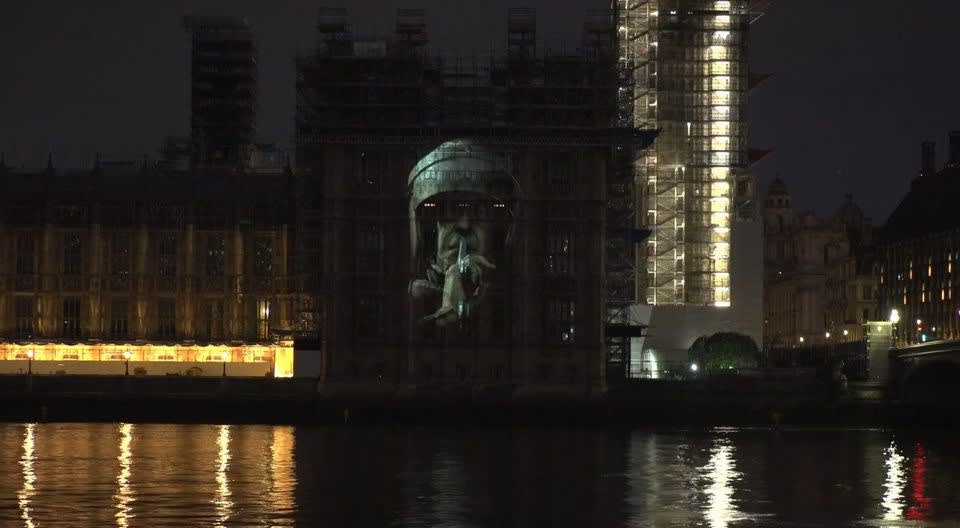 DEMOCRACIA, "Silence (Houses of the Parliament, London)", 2020
DEMOCRACIA, "Silence (Houses of the Parliament, London)", 2020Some Thoughts on Art, Politics, and Society
Pablo EspañaA few years ago (before the pandemic—remember that?), I would have written this kind of text with a firm hand and fanatism of an avant-garde manifest, indulging in the kind of manichean thinking we've often been accused of.
Jaime Cuenca suggested that it was better to see Democracia’s works than to listen to the authors, as our rigid political interpretation diminished the depth of the art. I don't dispute that. But now, honestly, I don't see many certainties anywhere, and tackling a reflection on political art can only be done through a few disjointed thoughts. However, these still hold some meaning for me, and maybe they might resonate with someone else too. -
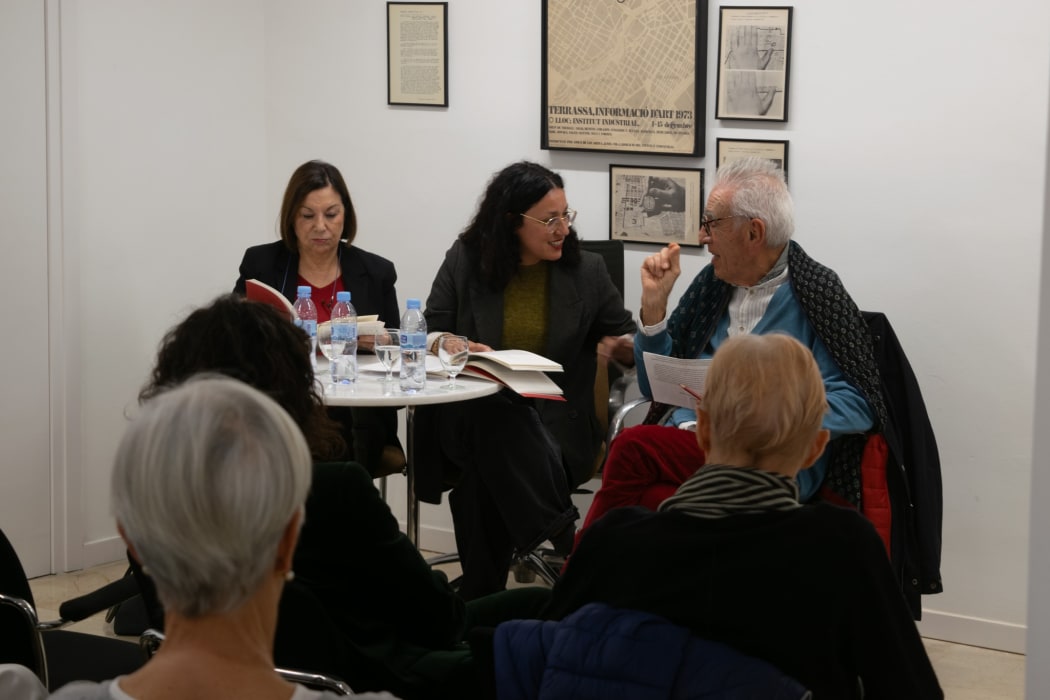
Antoni Tàpies and Grup de Treball: A Story of Institutional Critique
Patricia Sorroche"In truth, it's all a way of conceiving artwork, an entire attitude, as we see it's not exclusive to anyone."
The artistic scene within the national territory during the final stretch of Franco's dictatorship, particularly in Catalonia, was characterized by a period of change and experimentation, coexisting with fear and inherited conventions from previous decades. Events like the ICSID Architecture Congress in Ibiza in '71 and The Pamplona Meetings of '72 opened up and redefined a new landscape within art. -
 Kendell Geers "John 8-32", 2012
Kendell Geers "John 8-32", 2012Carousel of art
Berta CaldenteyArtistic creation walks with humanity to contribute to the shaping of its history. Therefore, it is legitimate to conceive it as a way of knowledge that allows the individual to move forward. The great poet José Ángel Valente defines poetry -and by extension, any act of artistic creation- not as communication, but as knowledge. He affirms that this is produced in the creative act itself. Such a conception of the poetic work may well be applied to artistic creation in any of its manifestations and formats. This means that the object of the work of art, unlike the theme -which may be intentional-, exceeds the artist's intention and is -as Valente would say- "apparitional" in nature. I sincerely believe that it is in the creative act itself when the artist accesses this knowledge, which invades the very form of artistic creation in which it is embodied to provide greater significance to all the senses of that work.
-
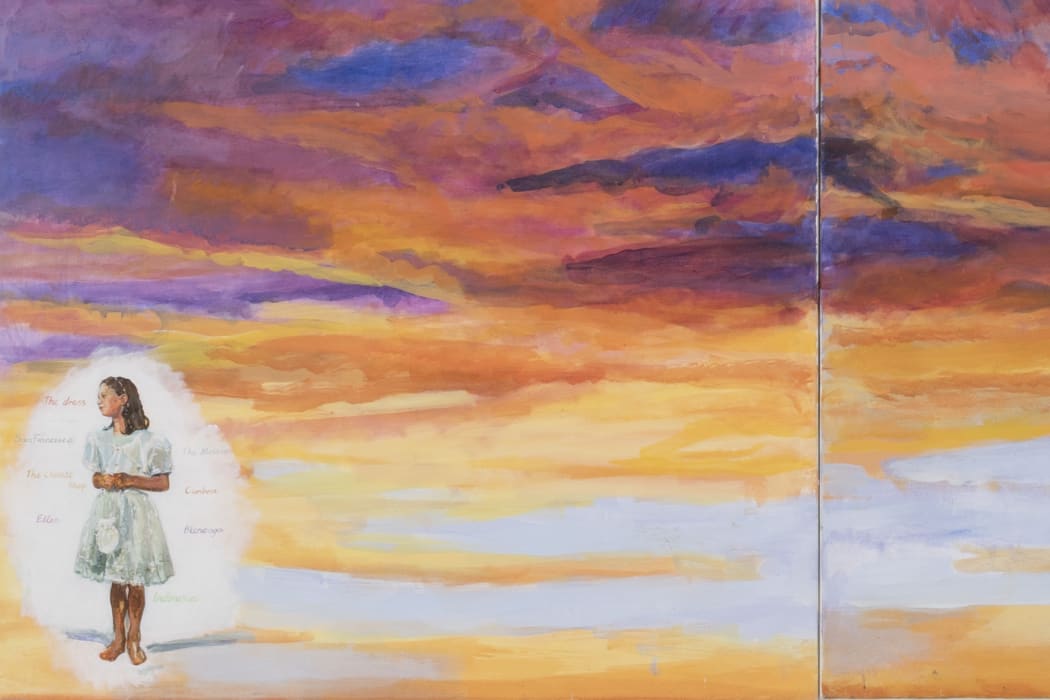 Margaret Harrrison "Ellen’s dress" (detail), 1998
Margaret Harrrison "Ellen’s dress" (detail), 1998For a political art
Pierre-Olivier Rollin"Western societies no longer see themselves clearly in the mirror of the future; they seem haunted by unemployment, won over by uncertainty, intimidated by the impact of new technologies, troubled by economic globalization, preoccupied by environmental degradation. What's more, the proliferation of "ethnic wars" is spreading the whiff of remorse and a feeling of nausea over these societies." This disturbing statement, formulated by journalist Ignacio Ramonet back in 1999 as epigraph to his book Géopolitique du Chaos, has today acquired a premonitory value insofar as it foresaw the many crises our contemporary world faces. It proves as a reliable beacon for any cultural institution or individual, creator or operator, pondering the societal function of art. The author himself sets this paragraph to a precise question: "In this dark context, what is the responsibility of culture?"
-
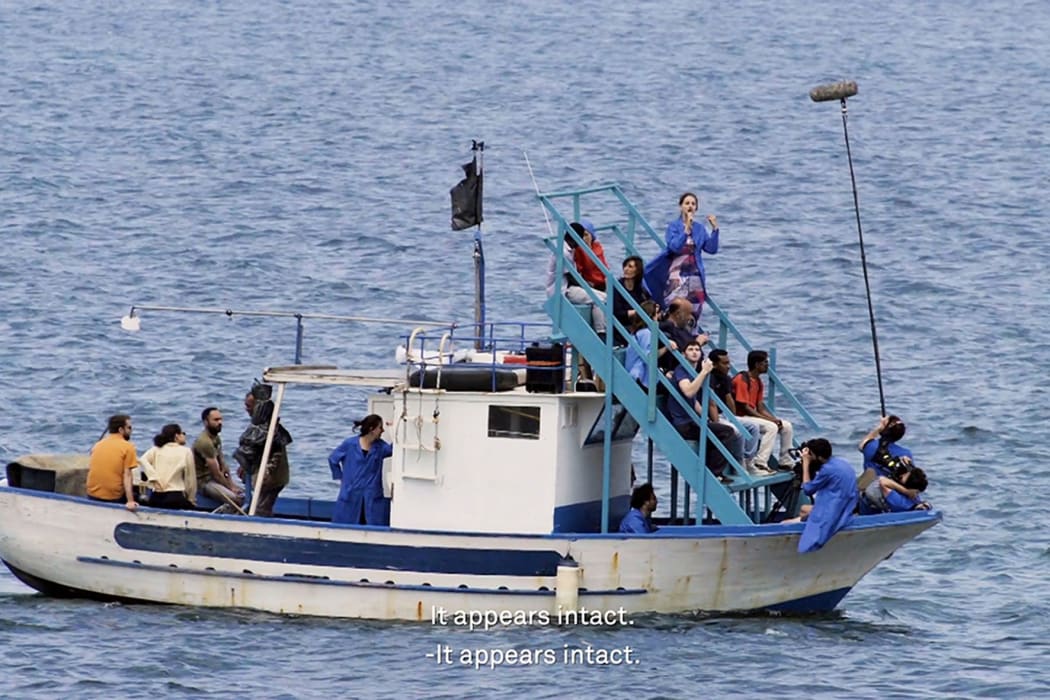 Jordi Colomer "New Palermo Felicissima" 2018
Jordi Colomer "New Palermo Felicissima" 2018In a recent interview, Slavoj Zizek declared that if he were a terrorist he would bomb "Kassel and the Venice Biennale." Among the reasons for this are the hypocrisy between discourse and action that have only become starker in the context of the last few weeks of fully endorsed genocidal war. The topics that the art world chooses to address seem to have an inverse relation to global societal tendencies. The elites and governments who fund artistic initiatives are funding discourses diametrically opposed to their intentions and beliefs.
-
 ADN Platform, 2023. Photo: Roberto Ruiz.
ADN Platform, 2023. Photo: Roberto Ruiz.The future coalition
Xavier Acarín WielandOne more summer we have broken all temperature records, showing that, if we are still in time to stop or alleviate climate change, this requires a profound reorganization of the established modes of production, consumption and behaviour. An emergency that means not only a structural transformation but also a perceptive and relational one, to which contemporary art can and must contribute, although assuming and overcoming its complicities with the neoliberal model. As is already known, the processes of extraction and debt that economic globalization has produced are now the breeding ground for reactionary movements. The misery created is now being exploited to assault power with irrational and messianic messages. -
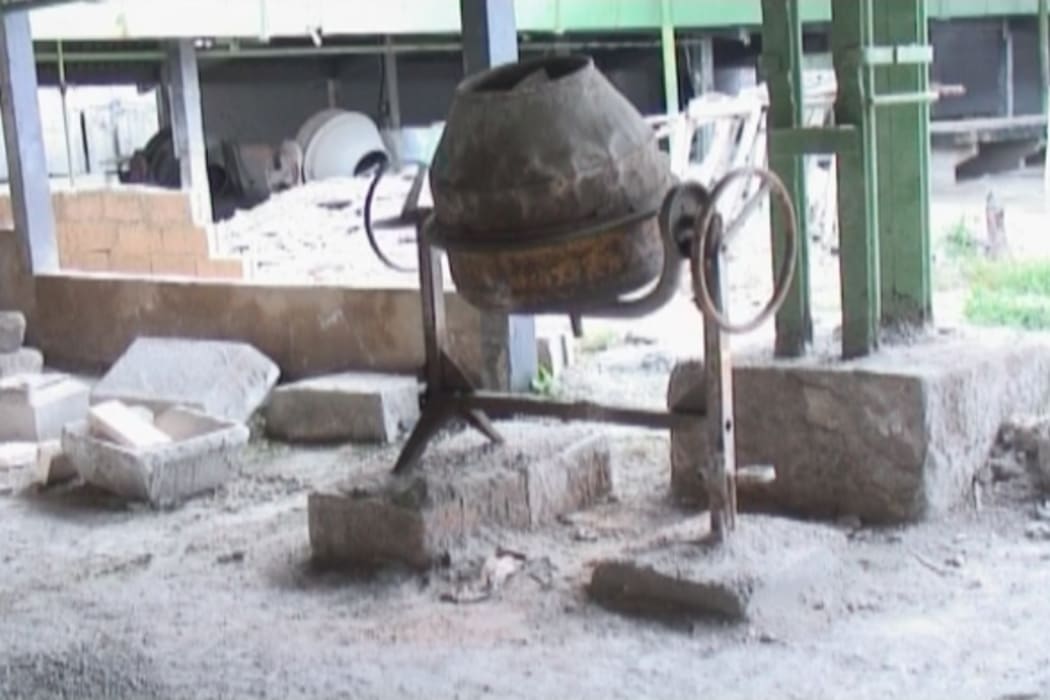 Adrian Melis, The Making of Forty Rectangular Pieces for a Floor Construction, 2008
Adrian Melis, The Making of Forty Rectangular Pieces for a Floor Construction, 2008Political art and private collections: a reflection
Anna Grazia Stefani & Francesco TampieriSome weeks ago, a friend (and gallerist too) encouraged to think about political artworks in private collections: is it proper to close in a private collection artworks inspired, or related, or suggested, by political events?
Maybe such works lose their role to inspire discussion, to rise protests, to point out problems. Or not?
Rephrasing the statement: does the private collection isolate the artwork, that becomes an object, a beautiful object, but separated from the society, which should be its primary target? This topic deserves attention.
-
 Kendell Geers, The Atrocity Exhibition (Human Fucking Nature) 4787, 2022In the decade that followed the 2008 financial crisis, a generation of artists emerged for whom studying an MBA was as important, if not even more important, than studying art history. The artist Walter Robinson described their work as Zombie Formalism: “Formalism because this art involves a straightforward, reductive, essentialist method of making a painting, and Zombie because it brings back to life the discarded aesthetics of Clement Greenberg […] With their simple and direct manufacture, these artworks are elegant and elemental, and can be said to say something basic about what painting is—about its ontology, if you think of abstraction as a philosophical venture. Like a figure of speech or, perhaps, like a joke, this kind of painting is easy to understand, yet suggestive of multiple meanings. […] Finally, these pictures all have certain qualities—chic strangeness, a mysterious drama, a meditative calm—that function well in the realm of high-end, hyper-contemporary interior design.”
Kendell Geers, The Atrocity Exhibition (Human Fucking Nature) 4787, 2022In the decade that followed the 2008 financial crisis, a generation of artists emerged for whom studying an MBA was as important, if not even more important, than studying art history. The artist Walter Robinson described their work as Zombie Formalism: “Formalism because this art involves a straightforward, reductive, essentialist method of making a painting, and Zombie because it brings back to life the discarded aesthetics of Clement Greenberg […] With their simple and direct manufacture, these artworks are elegant and elemental, and can be said to say something basic about what painting is—about its ontology, if you think of abstraction as a philosophical venture. Like a figure of speech or, perhaps, like a joke, this kind of painting is easy to understand, yet suggestive of multiple meanings. […] Finally, these pictures all have certain qualities—chic strangeness, a mysterious drama, a meditative calm—that function well in the realm of high-end, hyper-contemporary interior design.” -
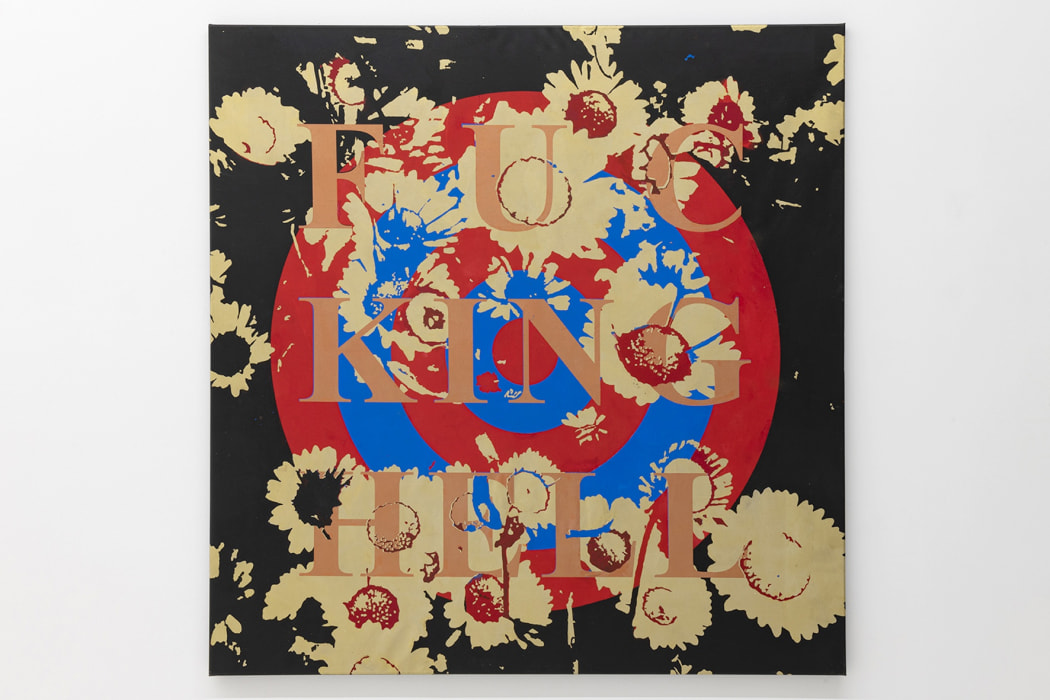 Kendell Geers, The Atrocity Exhibition (Fucking Hell) 874, 2022
Kendell Geers, The Atrocity Exhibition (Fucking Hell) 874, 2022Part 1
The 'ability' to speak is biological and it is what distinguishes our species from any other on the planet. It is by shaping our breath in sounds that we become human, and it is our command of that shaping that distinguishes us as adults from children, and poets from politicians.
The 'right' to speak is political because only once words have the weight of meaning do they acquire the power of consequence. Using language we created clans, kingdoms, empires, republics, countries and nations and divided the world with borders based on the subtle differences in the ways we shape our breath into sounds. Even within our own families and clans, the right to speak for oneself is unequally weighted by gender based hierarchies and the social construction of power. Regardless of intention, a man who speaks on behalf of a woman deprives her of the right to speak. The colonizer who speaks on behalf of the colonized uses the weight of their words to enslave their subject by predetermining what the subject is permitted, and not permitted to be. The artist who makes a work of art 'about' refugees is no better than a mercenary pimp profiteering off the voiceless status of their subject, superimposing their own identity, morality, culture and voice of privilege upon the disenfranchised silenced refugee.
-
 Núria Güell, "Ayuda humanitaria", 2008-2013.
Núria Güell, "Ayuda humanitaria", 2008-2013.More love, please!
Andrea Rodríguez NovoaAmong all the books that pile up and get replaced on my bedside table, there is one that remains and has been filled with post-its for six years: Fragments d'un discours amoureux [1] (1977). In it, Roland Barthes explains love in the mouths of others, in the mouths of many, and his writing joins the writing of those many to explain love from a coalition government with multiple voices. Aside from my complete admiration for all his work, when I reread it in August 2017, this compendium became a cornerstone text because it seems to me to perfectly condense the keys to the society we want. And I say this in reference to the content, yes, but above all to the form, because of that collaborative writing that develops a semantics of communication in which common and differential concepts are equally important. Barthes elaborates, alludes, comments, and collects quotes from Freud, Verlaine, Goethe, Lacan, Nietzsche, Balzac, Sartre, Bataille, Hugo, Stendhal, and a long etcetera of authors, to portray love in a structural way, and he does this at a time (1977) when speaking of love is, in his own words, "an act of an extreme loneliness." -
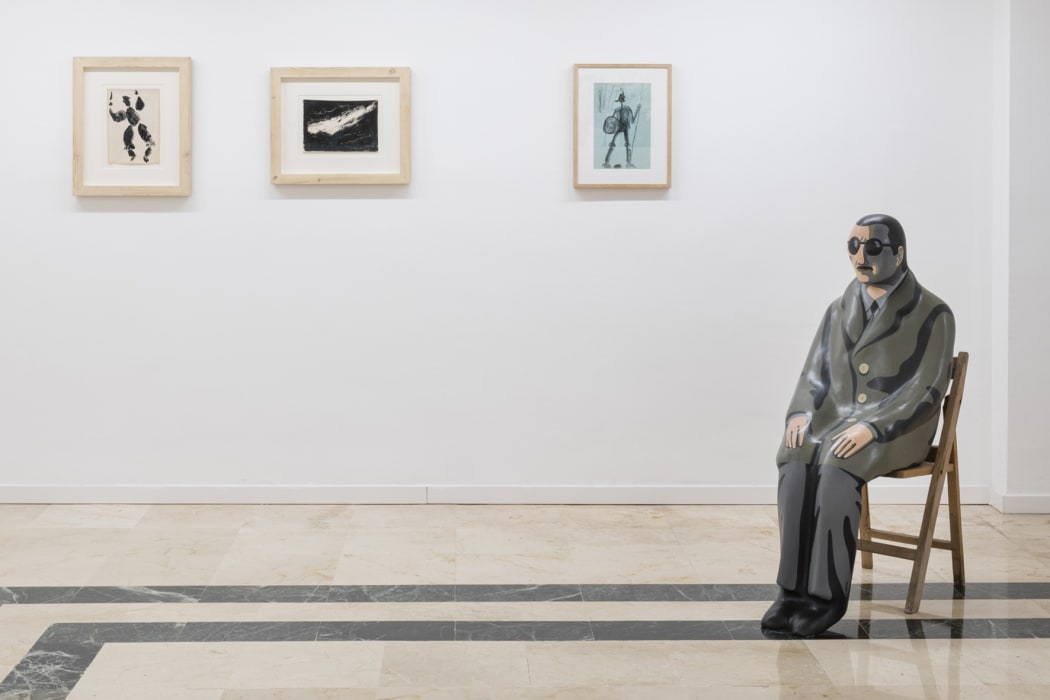
A copper week in Pamplona
Alán CarrascoIn 1972 were held the "Encuentros de Pamplona" (Pamplona Encounters), an unexpected international event that became a reference point for artistic experimentation in Spain during that decade. Between 26 June and 3 July of that year - barely a week before the Festival of San Fermín - Pamplona hosted the work of more than 350 major visual artists, artists of action art, musicians and composers, which brought the old traditionalist capital into fleeting alignment with the 36th Venice Biennale and documenta 5 in Kassel: Néstor Basterrechea, Esther Ferrer, Laura Dean, Francesc Torres, Antoni Muntadas, John Cage, Carlos Ginzburg and the Centro de Arte y Comunicación (CAyC), Dennis Oppenheim, Luc Ferrari, Steve Reich, Jordi Benito, Equipo Crónica and Shusaku Arakawa, among others. -
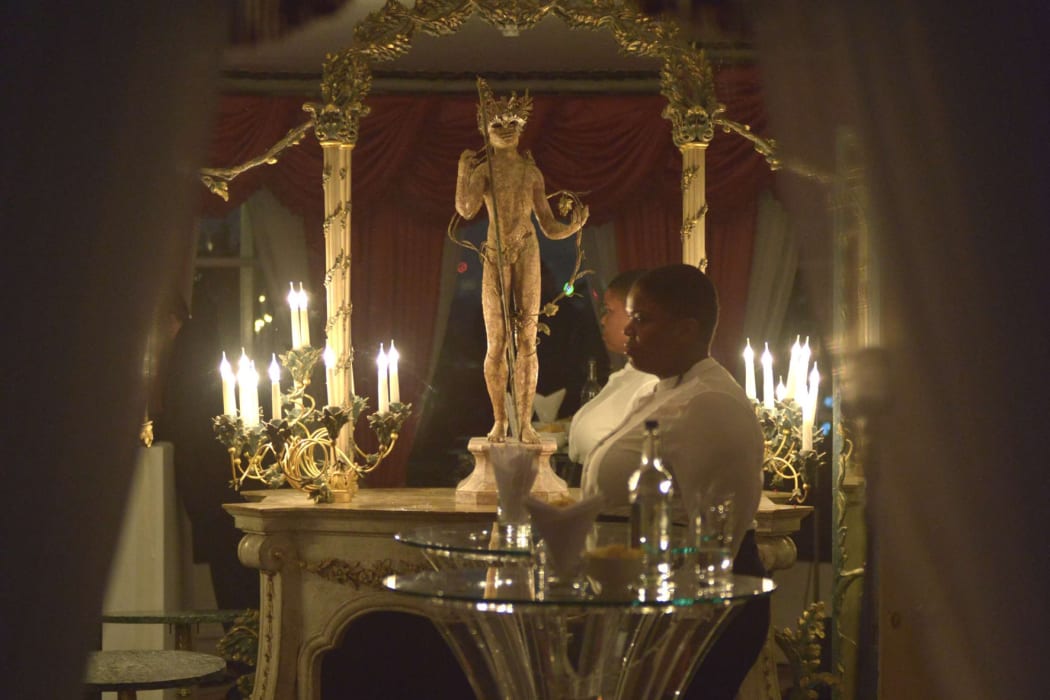 DEMOCRACIA, Order III (detail), 2017.
DEMOCRACIA, Order III (detail), 2017.Our obedience produces monsters. Towards a revolutionary future
Gisela ChillidaIn a late-capitalist society there are perhaps few human activities as polarised as artistic practice: it can be one of the most revolutionary, as it is not reduced to utilitarian, functional, quantitative, ponderable values, while at the same time it has long since become one of the most fertile terrains for manoeuvres of speculation, gentrification and domestication. This is why the positioning of the artist and his or her commitment to the cultural struggle against the culture of cancellation, self-exploitation, woke neoliberalism and artwashing of the most varied kind is so important. If we are not capable of questioning the system, we perpetuate its inequalities. I think then of the pressing imperative to reposition ourselves politically for the sake of a radical transformation. Only in this way will we achieve a truly revolutionary art. -

Coalescence (Coalescències, Coalicions, Col·lisions, Col·lapses)
Interview between Paul O’Neill and Xavier AcarínXA: ‘Coalesce’ started twenty years ago at London Print Studio. Since then, you’ve done a few iterations at several art organizations involving more than a hundred artists. You’ve also written about it, so we can imagine that this project has been formative in your curatorial thinking. If we were to go back to 2003, what were the impulses that brought you to consider this curatorial approach?
PON: We did the first presentation of ‘Coalesce’ at London Print Studio in the spring of 2004, but the project started as an idea in 2003. At the time I was the gallery curator at London Print Studio, and I was curating a series of twelve shows that was called ‘Print Space’, which was about how artists were dealing with print in their practice. We had an incredible printmaking studio, so we could do anything, from lithographs to digital printing. ‘Coalesce’ came towards the end of that series, when Eduardo Padilha proposed to turn the entire space into an exhibition, without distinguishing between working and exhibiting spaces. He collaborated with Kathrin Böhm, who had done an exhibition called ‘andmillionsandmillions’ at The Showroom in 2001, in which she covered the entire space with print materials and that had architectural components, also giving away materials. Together with Jaime Gili, Kathrin and Eduardo covered all the white walls and display panels of the gallery at London Print Studio and turned it into a studio, a place of coproduction, with Eduardo’s sleeping bags and printed carpets on the floor as places of rest.
-
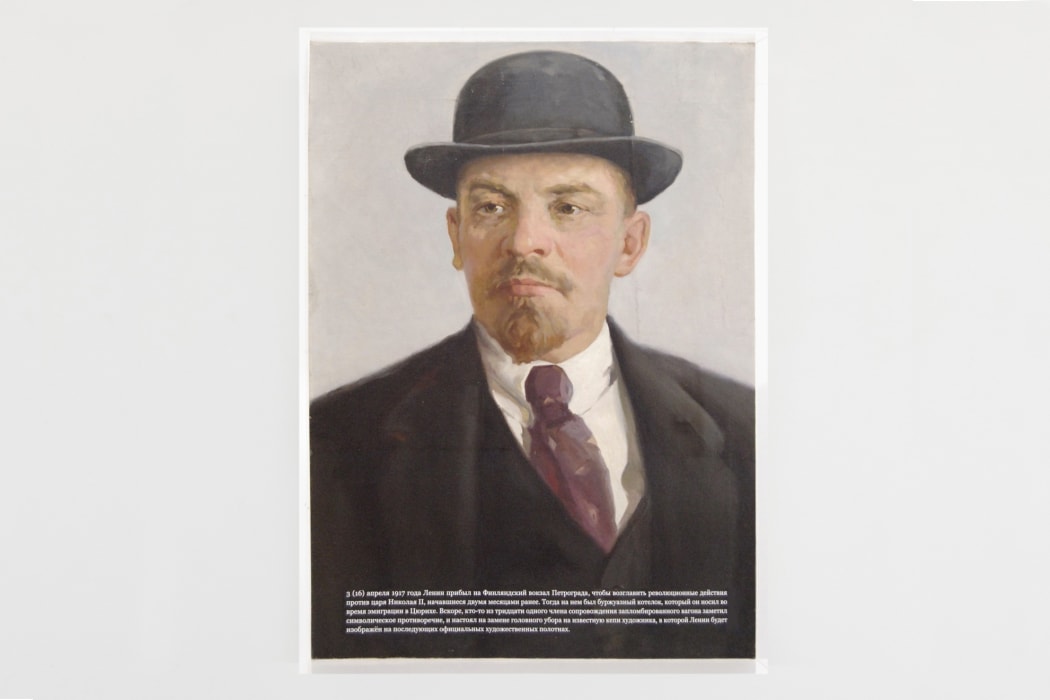 Alán Carrasco, “Les faits sont têtus", 2019.
Alán Carrasco, “Les faits sont têtus", 2019.From Lenin to Kanye West
Pilar CruzLenin wore a bowler hat like the bourgeois he was.
In Russia in 1917 the revolts against Tsar Nicholas II were successful and the first Soviets were formed. At this point, Vladimir Ilych Ulyanov decided to return from Swiss exile to lead the Revolution and managed to organise a "sealed train", which would be able to travel the territories separating him from Petrograd without being searched or arrested. So, he arrived at the Finland Station in Petrograd safe and sound, and wearing a bowler hat, a customary item of clothing in his years of exile. Someone close to him made him realise that a bowler hat was not the most appropriate thing to harangue the proletarian masses, and from then onwards his most characteristic garment was the painter's cap he wore and with which he was to be represented in official iconography.
This iconoclastic gesture, the erasure of an identifying garment such as the bourgeois hat, replaced by the workers' cap, is the one that the artist and researcher Alán Carrasco reverses in Les faits sont têtus¹. Alán is interested in the processes of iconoclasm and collective memory, the mechanisms by which official narratives are constructed and how the elements that make them up are selected. He therefore looks at the fringes of the historical narrative and the reasons why certain aspects and actors are erased.
-
 Núria Güell, "Afrodita", 2017.
Núria Güell, "Afrodita", 2017.Against democracy in art
Sébastien PlanasArt is not democratic, neither in its creation nor in its reception. Democracy in art is the median choice. On the contrary, art is interesting when it is radical, when it embodies singular, subjective, unexpected choices, choices that are disturbing and inconceivable to those who must decide on its eventual exhibition. Let us not give examples. Art must hurt, and one does not choose democratically what hurts. Moreover, we do not choose it, we endure it. Democracy is lukewarm, art burns or freezes. Can citizens understand the need for fire or ice? -
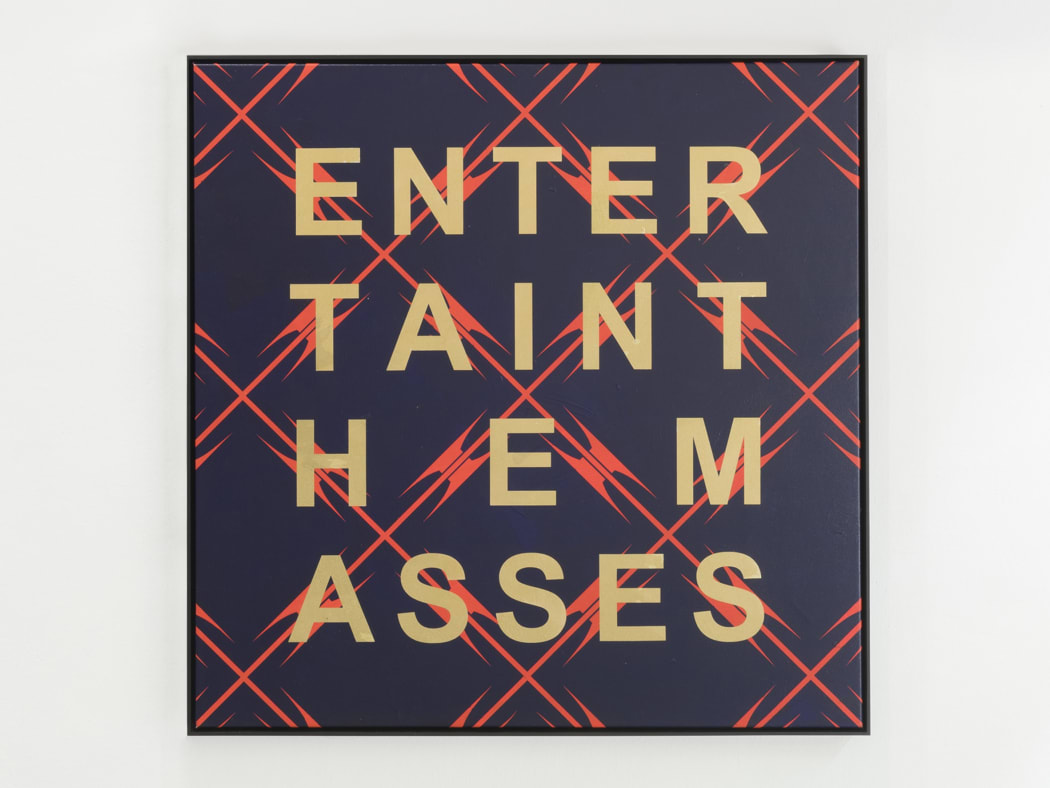 Kendell Geers , "#NEW Speak (Entertain The Masses), 2019.
Kendell Geers , "#NEW Speak (Entertain The Masses), 2019.A dialogue of dumbs (on political and institutional discussion)
Fernando Gómez de la CuestaAfter many meetings, a lot of time and a lot of effort, I have the feeling that we are still trapped in a recurrent and insubstantial loop that repeats, over and over again, the same discourses, the same (im)postures, the same lack of efficiency, the same inaction. We always sit around similar tables, with similar individuals who say similar things while seeming to listen to us. Let no one think that all this is accidental, that so much rhetorical redundancy and so much passive bureaucracy is due to random, to the conjunction of the stars or to the direction in which the wind is blowing, not at all. Nor is it the consequence of the crisis, the war or the bloody pandemic, even if we now want to blame it all on the fucking coronavirus; don't fool yourselves, that is not what it is about. In truth, this ineffectiveness that affects cultural policies and that emanates directly from the ruling classes (those who have the code of domination and the capacity to change the situation) responds to biased, partisan objectives that have been tortiously planned from those in power. It is not just that they don't know how to do things, that could be fixed, it is simply that they don't want to, it doesn't suit them, nor is it in their interest. -
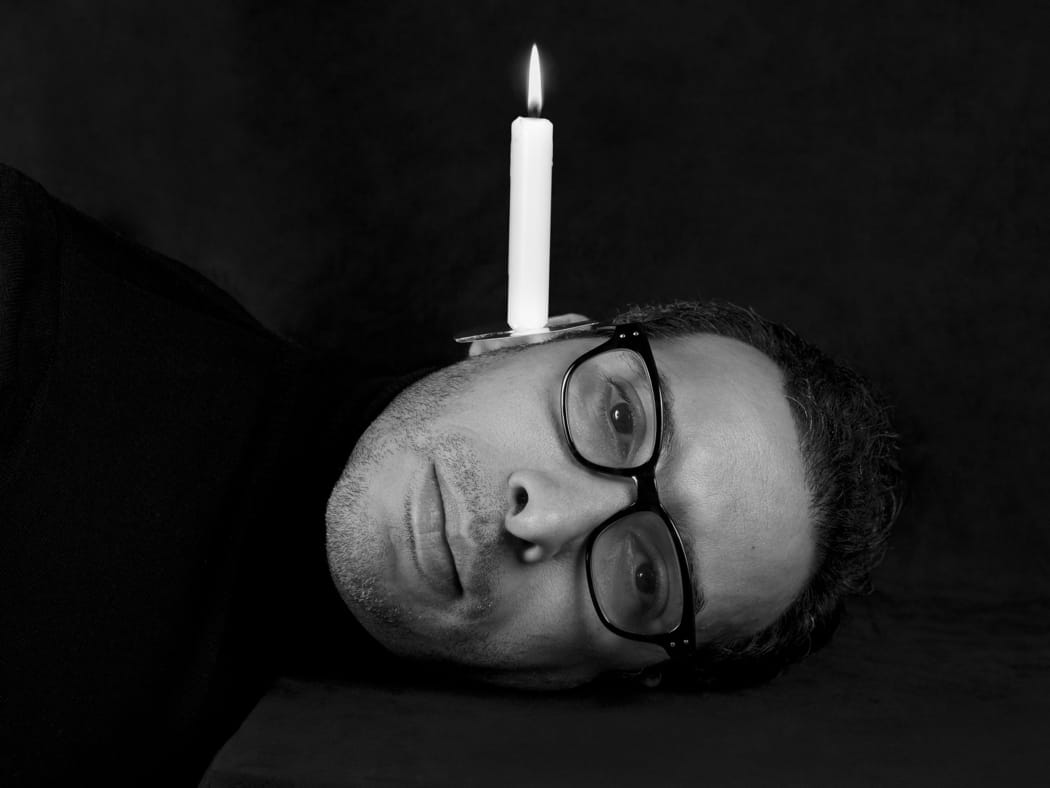 mounir fatmi, "Calligraphy of Fire", 2015.
mounir fatmi, "Calligraphy of Fire", 2015.The devil in the back seat. Woodman, Wang and photography
Eloy Fernández PortaEsmé Weijun Wang tells us that she is the author of about a hundred photos. The meagre number surprises and moves us in an age of compulsive overproduction and exchange. Most of them are self-portraits, images of shadows, long winters. Landscapes. She has taken some of them using a Polaroid SX-70; others, with a Contax T2. She has never exhibited them; we only know of them from the description she gives towards the end of Todas las esquizofrenias (Sexto Piso, Graywolf Press Prize) (The Collected Schizophrenias), his autobiographical account of this ailment, to which have been added, in different and often contradictory diagnoses, bipolar disorder and chronic Lyme disease –one of the diseases that remain outside Obamacare and which drive most patients into debt, if not ruin. -
 María María Acha-Kutscher, "Womankind. Serie 4. 1", 2013.
María María Acha-Kutscher, "Womankind. Serie 4. 1", 2013.Attention, attention
Rosa LleóThis Easter I found time to read How to Do Nothing by the American writer and artist Jenny Odell. With an extremely appealing title for a holiday, it is the subtitle Resisting the Attention Economy what specifically interested me most. Much has been written about our obsession with productivity and profit, but not so much about the consequences of the exhaustion produced by it. Bifo talks about the psychotic collapse of the Western mind, particularly after the pandemic; of the difficulty of an encounter between bodies, with an organic time and space in which to be able to think in common horizons of equality, or even of rebellion and protest. -
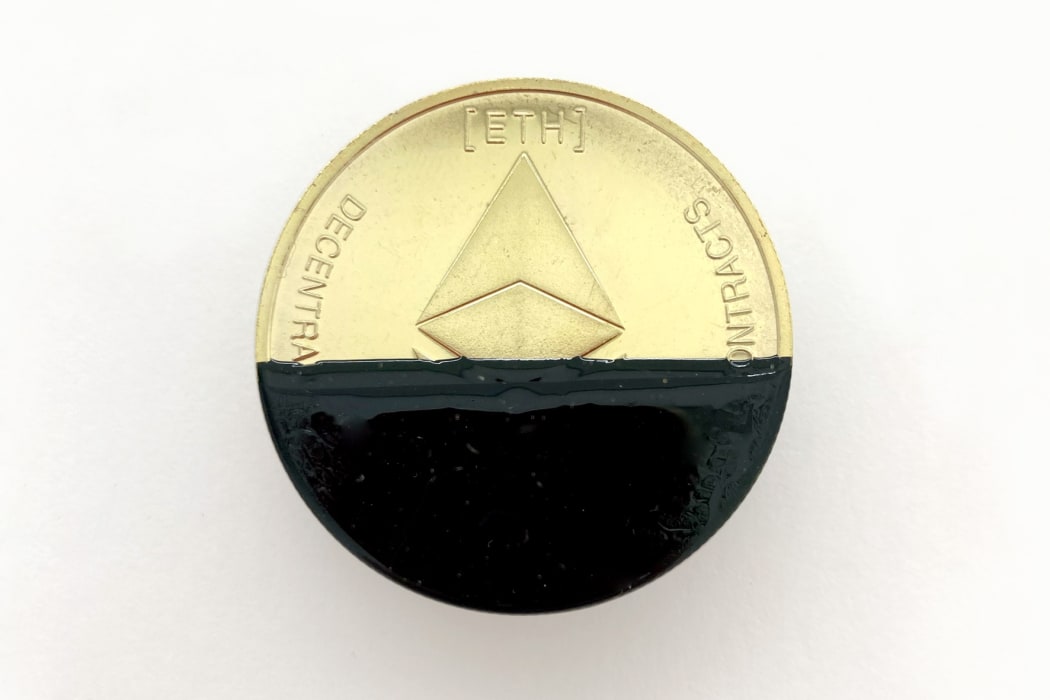 Avelino Sala, "Black Rain Ethereum", 2022.
Avelino Sala, "Black Rain Ethereum", 2022.CryptoArt is based on a digital resource that embeds in an artwork data such as the information regarding the author, who it belongs to and what its sale price is, taking a digitised physical production or a directly virtual creation. In principle, it grants autonomy to the artist to manage online sales and access a type of collecting that operates in the cryptocurrency market. So much for the basics we have been told about NFT, an acronym for "non-fungible token" to designate a unit of value that allows buying and selling the ownership of unique digital items and tracking who owns them over time, in the event that digital media are stable and durable; also, in case the bubble does not burst.
-
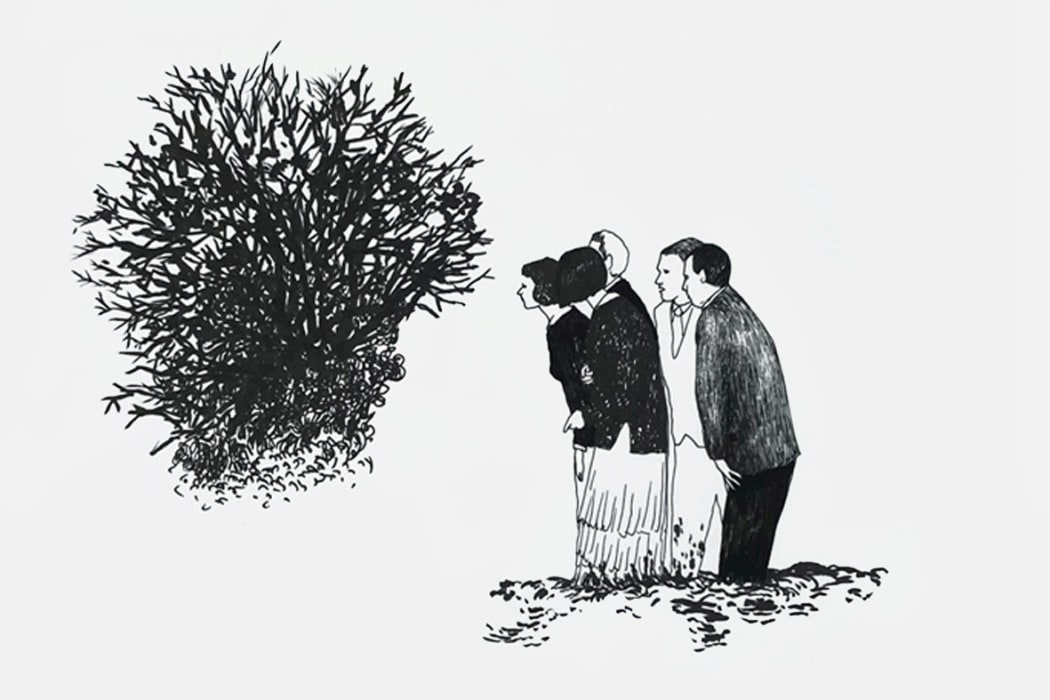 Abdelkader Benchamma, "Sans titre 14", 2010.
Abdelkader Benchamma, "Sans titre 14", 2010.The (lost) ritual of the opening
Marc CaellasWhy are exhibition openings so boring? Why do we still attend them? What makes us leave our comfy armchair? Curiosity for the new work of an artist we are interested in, the possibility of meeting a friend or the wish to broaden our social relationships?
-
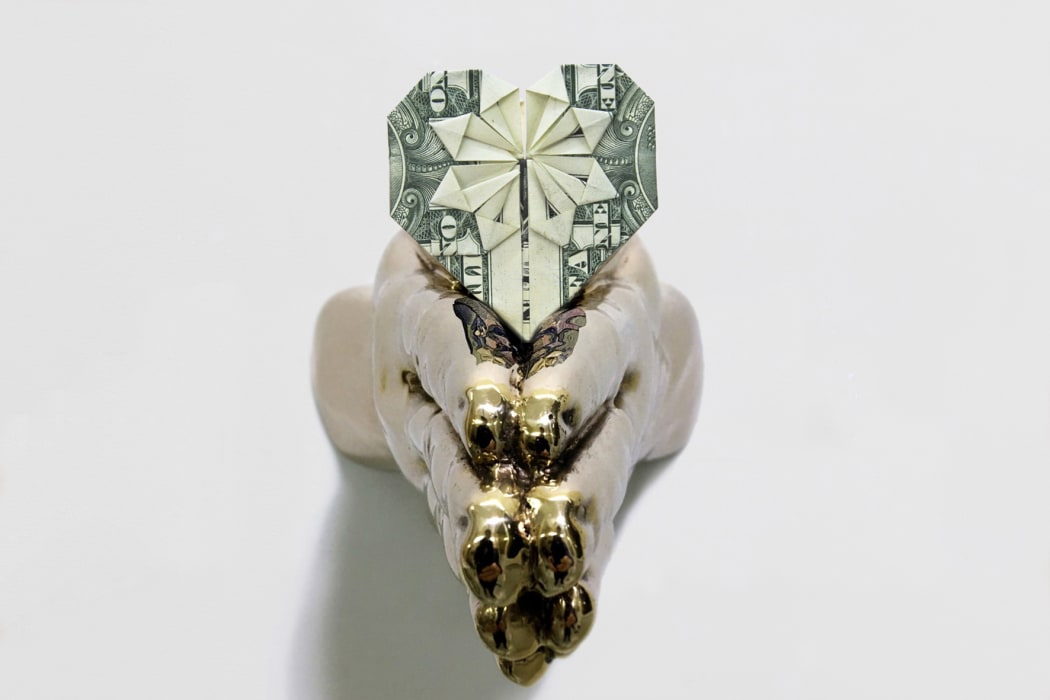 Eugenio Merino, "In God We Trust. Everyone Else Pays Cash", 2015.
Eugenio Merino, "In God We Trust. Everyone Else Pays Cash", 2015.The whole set of rules, moralities, procedures, mechanics, legislations and routines1 that make up our life experience, organised and reproduced from a position of domination, highlight "time" as an important factor in production as a result of the old relationship between knowledge and economy. For the West, the victory of the Capitalist Bloc during the Cold War2, creating an appearance of well-being, entailed the establishment and normalisation of the Capital system in the field of the production of knowledge and, more specifically, of the knowledge related more to symbolic life than to the material one. For contemporary Capitalism, where we live together in an attempt to survive, symbolic life has shaped the central axis of economy by incorporating meaning as the proper exercise of works seen as "cultural". Because for Capital, every knowledge must produce economy, thus determining our ways of grasping relationships and transforming our sensitiveness and understanding of knowledge that must "compulsorily" generate capital gain3.
-
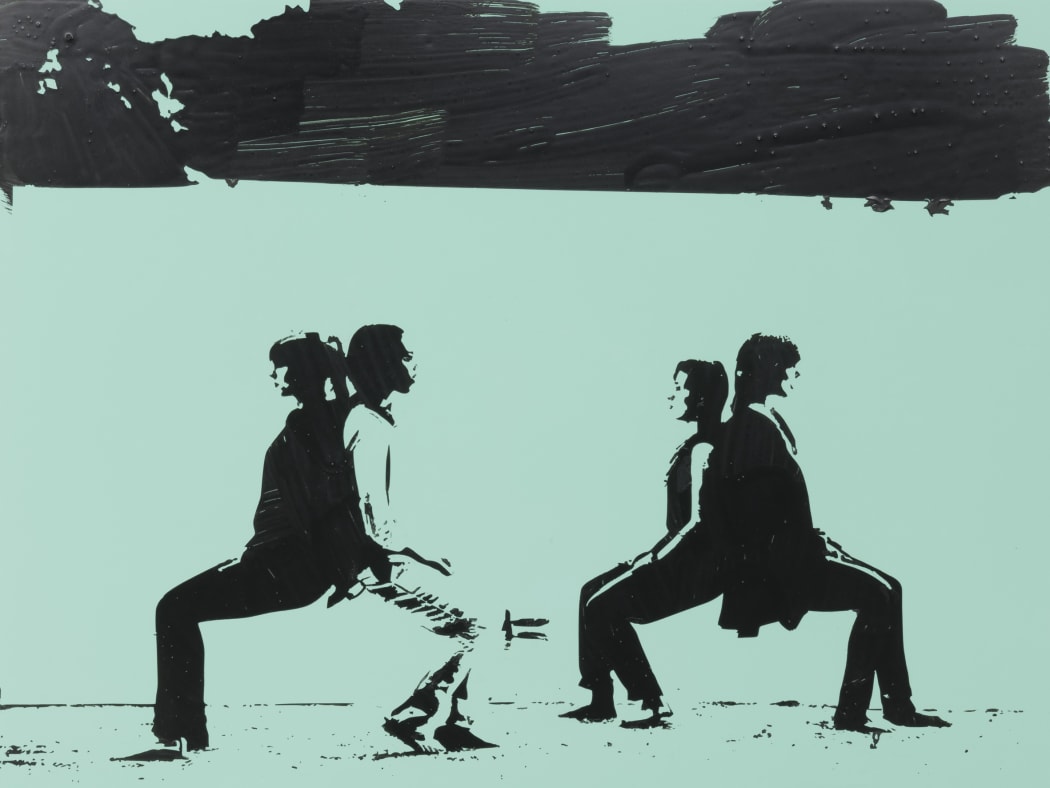 Marinella Senatore, "Remember the first time you saw your name", 2017.
Marinella Senatore, "Remember the first time you saw your name", 2017.Towards new institutionalities. Notes for a museum of the common
Patricia Sorroche"Due to the close correspondence existing between art and power, certain sectors have regarded modern and contemporary art and its structures as cultural expressions of capitalism. Modernity is associated with a set of bureaucratised institutional practices, with a predetermined structure of disciplines and social functions, and with the colonisation of the non-European world. From this it follows that the only thing that can bring about the end of capitalism is the cancellation of modernity."1
-
 DEMOCRACIA, "Order III: Dinner at the Dorchester" (detail), 2018.
DEMOCRACIA, "Order III: Dinner at the Dorchester" (detail), 2018.Opus magnum
Francesco Giaveri"I want to rule and have possessions!"
Goethe - Faust
In his speech from 1966 on the suggestive theme Culture and Corporation’s Support of the Arts, David Rockefeller declares that he believes in the specific benefits that art provides companies with: "From an economic standpoint, such involvement can mean direct and tangible benefits. It can provide a company with extensive publicity and advertising, a brighter public reputation and an improved corporate image." Among the many masterpieces that the eminent banker collects to subsequently donate to renowned institutions, thus fulfilling his role as a prominent patron of MoMA, there is a portrait of Félix Fénéon. -
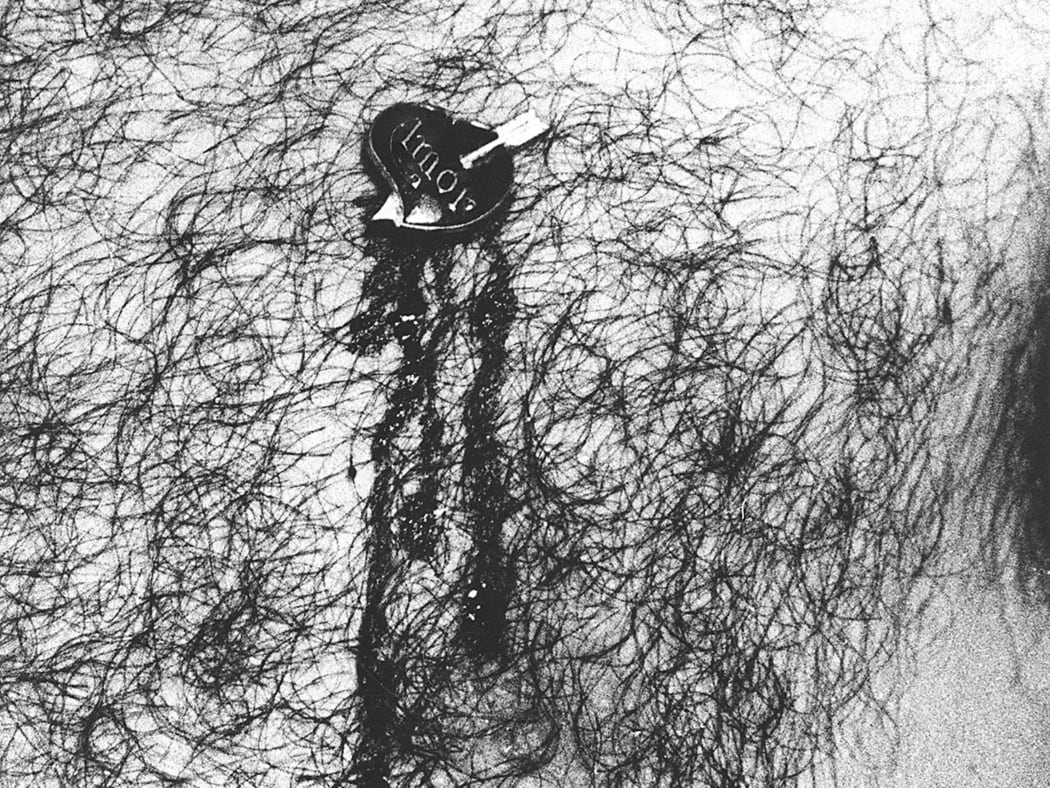 Carlos Pazos, "El amor duele (primera aproximación)", 1974.
Carlos Pazos, "El amor duele (primera aproximación)", 1974.Wherein lies the danger, grows also the saving power
Diana PadrónIt seems reasonable that in a period of extreme immunity like the present one, in which both a health emergency and increasing social polarisation -with its subsequent expressions of unrest, hatred and violence- are accelerating the deterioration of community living and relationships, the so-called affective turn has ended up playing the main role in most discourses in the art and academic sphere. Nevertheless, and with no intention whatsoever of lowering the potential of a bet in this direction, we should point out how worrying it is that a policy of affective turn may end up being assumed as a place for consensus, instead of a constructive space for critical debate.
-
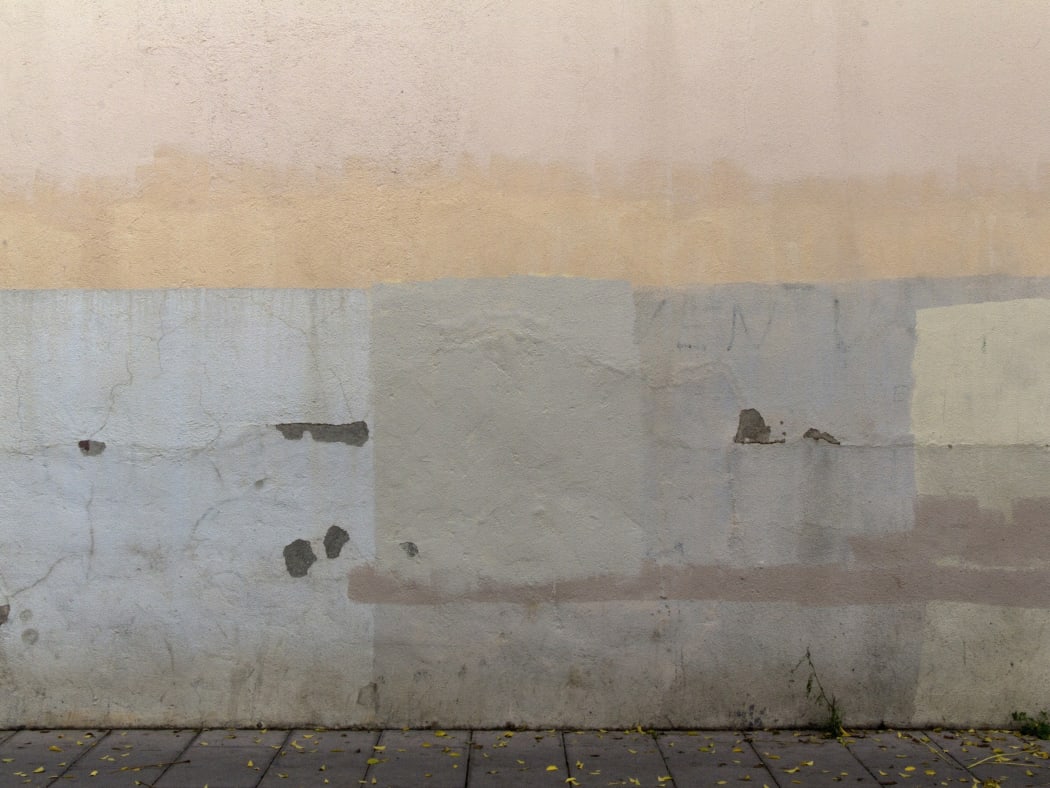 Adrian Melis, "Puntos de reposición", 2013.
Adrian Melis, "Puntos de reposición", 2013.The ambiguous coexistence of art in society
David MoránOne of the most pleasant memories of my childhood is the visits that every Sunday my parents organised to a museum in the capital of Spain –Madrid, an inhospitable place for almost everything, but rich in art galleries. On these occasions, I was fascinated standing in front of those strange objects –mostly paintings– that seemed to have a life of their own and the ability to teleport me far away from routine. A large part of my experience as an art viewer is related to this early impression and an uncertain notion of the independence of the work that was developing inside my noggin in those times.
-
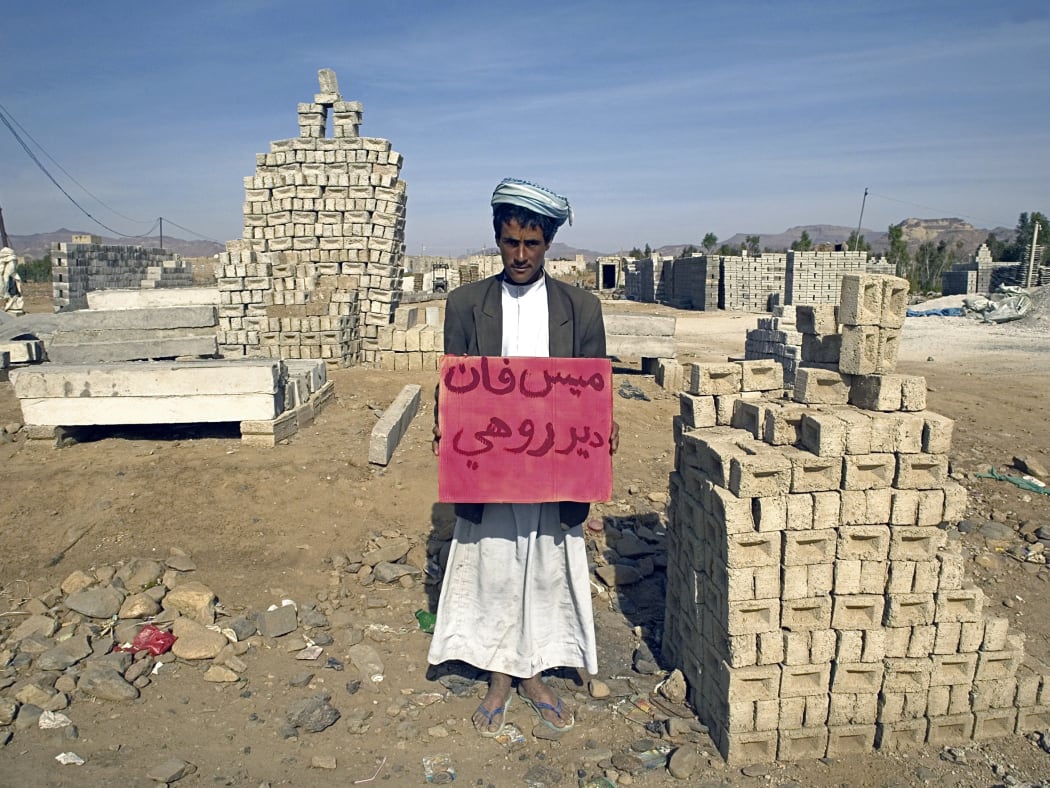 Jordi Colomer, "Arabian Stars. Mies van der Rohe", 2005.
Jordi Colomer, "Arabian Stars. Mies van der Rohe", 2005.The British Empire
Alexandra Laudo [Heroínas de la Cultura]One of the greatest difficulties we face as human beings –especially if we are prone to reflection and self-analysis– is perhaps to live coherently; that is to say, acting in accordance with the values and principles we follow, so that there is a cohesion between them and our actions. Art, as a space for the production of critical thinking, encounters the difficulty of coherence; or, in other words, the problem of the lack of coherence that appears when theoretically advocating some postulates that very often do not operationally find a consistent transcription. The list of contradictions between thinking and acting, between talking and doing is remarkably long in the sphere of art, and although we endeavour to make it shorter by analyzing such inconsistencies to solve them, the time we require to reduce them is always much less compared to the quick pace at which we add new contradictory aspects between theory and practice to this list.
-
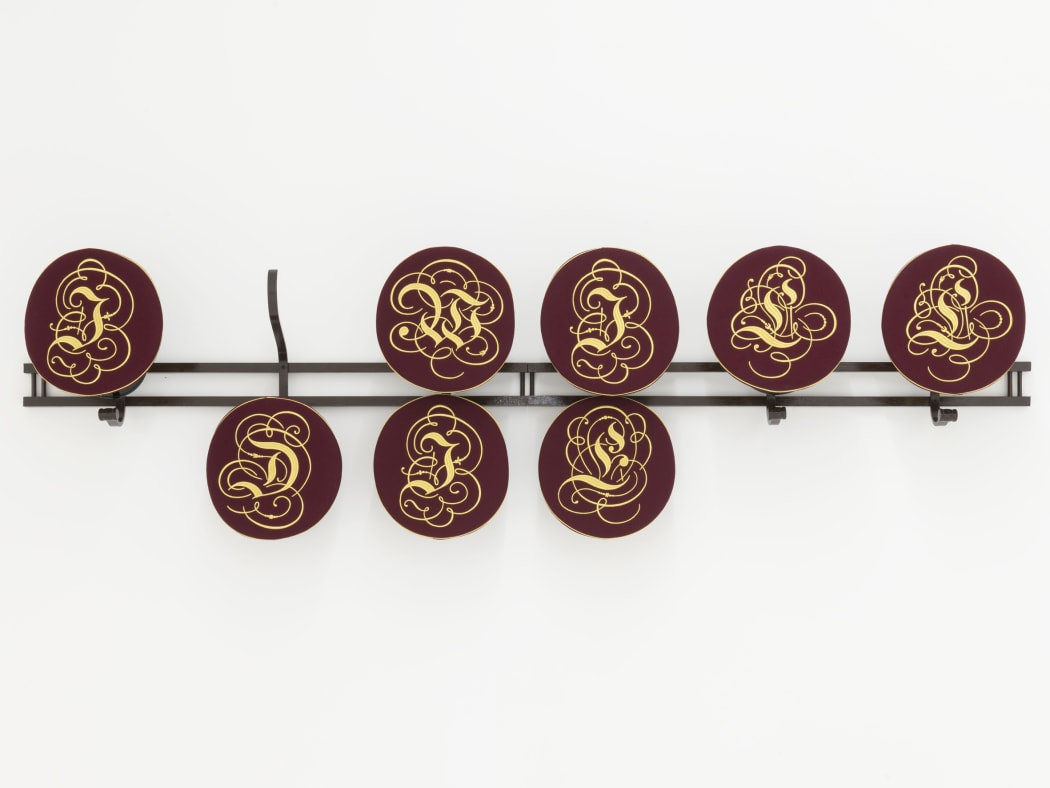 Carlos Aires, "I Will Die", 2019.
Carlos Aires, "I Will Die", 2019.Gear
Frederic MontornèsA gear is the mechanism that is used for transmitting mechanical power from a component to another by means of the contact of gear wheels, which may have a cylindrical or conical shape; according to the relative orientation of these axes or their cogs in relation to the axes, they may produce a large variety of typologies. Consequently, a gear produces a movement of circular transmission, and this, in turn, produces wear on its parts due to continuous friction. In order to reduce the wear produced by the use of a gear and lengthen the lifespan of the machinery and avoid repairs as well, it is extremely important to keep the gear well lubricated. Otherwise, it goes rusty, it hardens, it ends up being scrap, it loses interest and is of no use anymore.
-
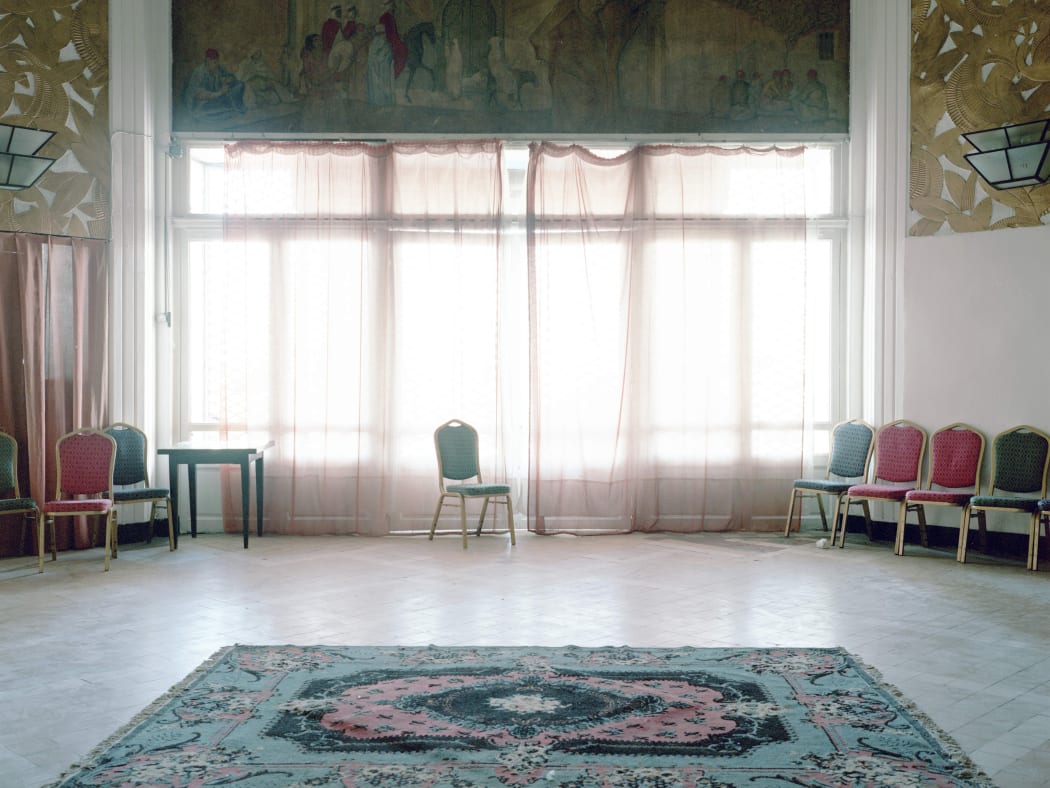 Bouchra Khalili, "Foreign Office. Hotel El Safir, Ex-Aletti, Algiers City Center", 2015.
Bouchra Khalili, "Foreign Office. Hotel El Safir, Ex-Aletti, Algiers City Center", 2015.Mourning Lost Appearances
Paul O'NeillWhere to start? Or, more precisely, how to begin? How can I talk of anything during a time of extraordinary social change of global magnitude? Things feel like they will never again be as they were before. Despair is confused with overarching blurs of personal loss, combined with collective mourning for an earlier time. Are we a “community in death” while we are social distancing?3 Our world is a politics of populism, protectionism, and discrimination. Exclusion is pervasive. The question of how rather than what to write about what we see seems more pertinent than ever.
-
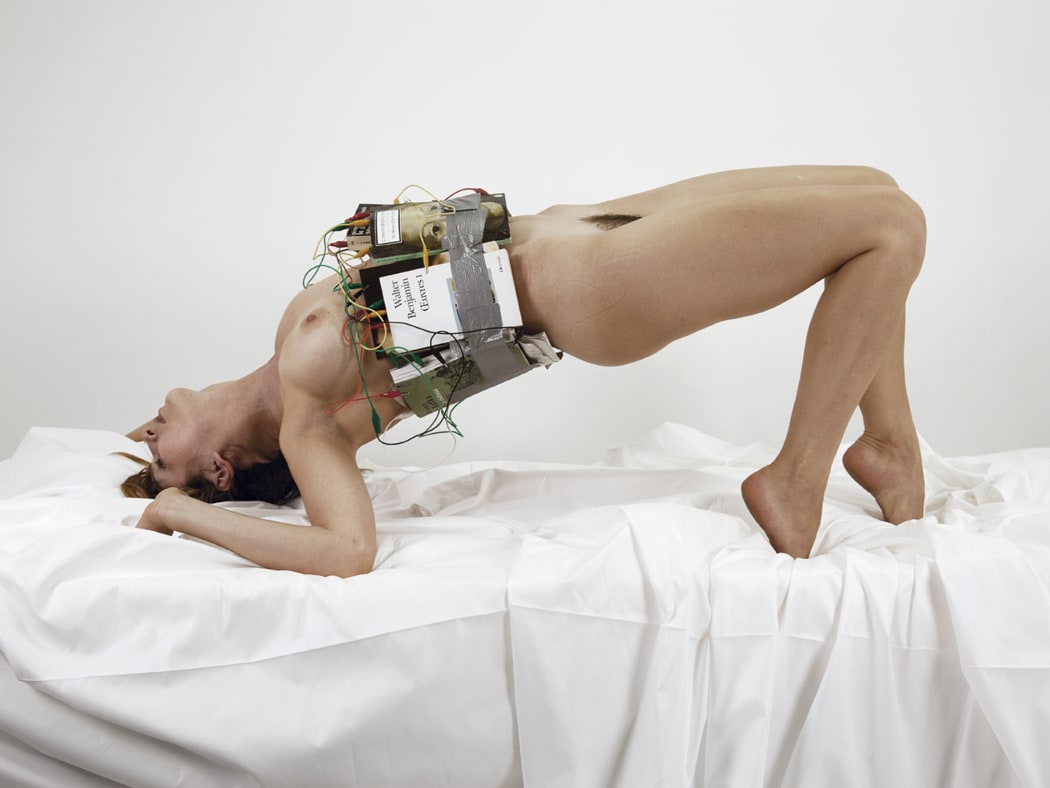 mounir fatmi, "Evolution or Death, Phoebe", 2014.
mounir fatmi, "Evolution or Death, Phoebe", 2014.The barrier of cynicism
Montse FrisachAt the end of 2020, the current Spanish Minister of Culture José Luis Rodríguez Uribes asserted that "for the first time" the culture sector was not going to "suffer the consequences" of the crises derived from Covid-19 thanks to the subsidies and the budget increases foreseen for 2021. These declarations are rather peculiar because they implicitly acknowledge that culture always ends up suffering the consequences. It is taken for granted that the culture budget is always the easiest and the most effortless to cut back. Because, after all, what percentage of the population would demonstrate if a museum were to be shut down? How would the demonstrations be in the street if most art galleries were forced to close?
-
 Marcos Ávila-Forero, "From The Mountains. Varela Family", 2017.
Marcos Ávila-Forero, "From The Mountains. Varela Family", 2017.Working (and thinking) from an anthropological perspective
Ana García AlarcónAs an art historian, I have always been very much focused on the visual arts, particularly on the art of our times and on an art with an eminently critical point of view. I am interested in art that has things to say and to contribute, which echoes problems that sometimes seem invisible so that they may be seen; it may also be that we,1 women, hide and ignore them to keep on going with our comfortable lives.
When I begin to do research into these issues I see how (and this is something I deal with in many of my texts, always taking into consideration the book by Miguel Ángel Hernández who talks about an artist as historian),2 I feel attracted by the figure of an artist who, somehow, works both as a historian and an anthropologist. Thus, the artist appears as a producer of realities. The art created from this position becomes a device that may end up having a social impact (although it may also go unnoticed and become diluted). -
 Joan Pallé, "A magnificent place to live, work, or commit suicide", 2018.
Joan Pallé, "A magnificent place to live, work, or commit suicide", 2018.Easy Rider
Antonio OrtegaThe ADNBlog -just like the whole ADN project- focuses on the relationships between art, politics and society.
Well then, from all the possibilities offered by this thematic framework, I do not know why but I decided to focus on the efforts that every artist interested in addressing political and social issues has to make to avoid being identified with the free rider figure (who has benefitted from what has been produced in a communitarian way). I think that this is due to the error of mixing up what is moral and what is political, as it may be observed in the fact that the free rider may be exposed to moral and not penal disapproval. So too, flirting with moral conflict, I decided to use as a writing technique the most despicable expression of academic production: the cut and paste method from Wikipedia. -
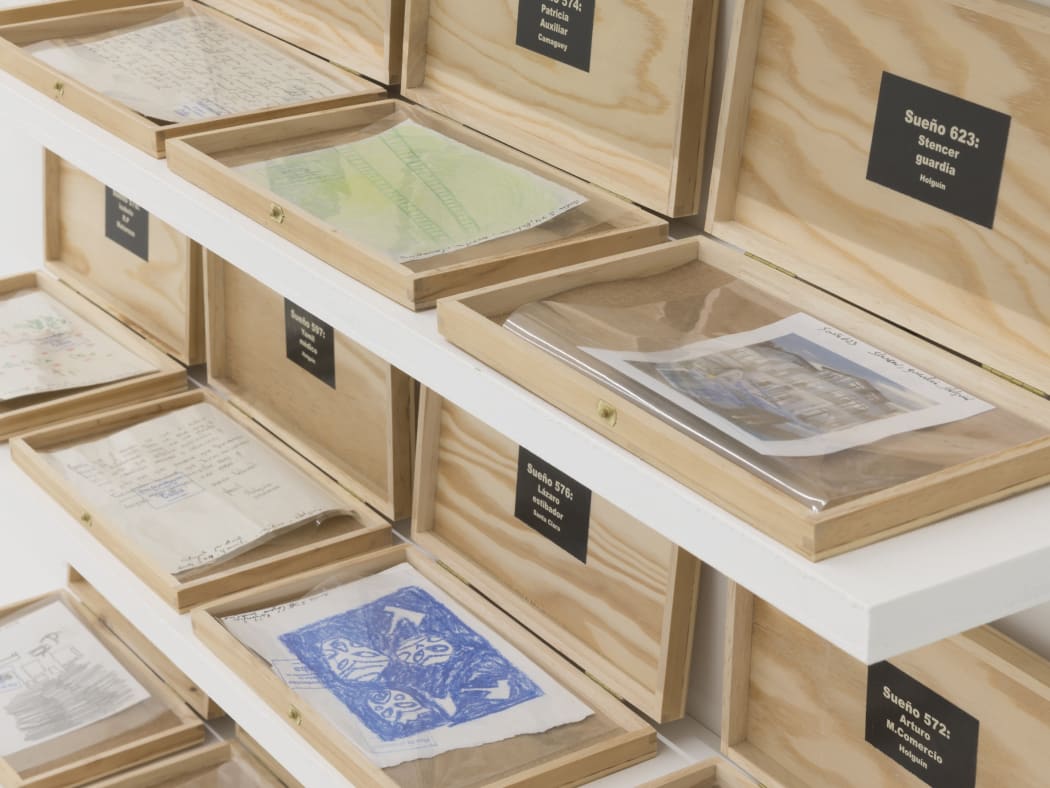 Adrian Melis, "Dream Production Plan", 2012-19.
Adrian Melis, "Dream Production Plan", 2012-19.Let us become engaged collectors
Christophe VeysWhat is the social role of a male or female collector? To purchase, or even better, to pay. This dimension is a crucial point. It allows for the artist's finances, most of the time extremely fragile, to recover and for the art gallery to operate. By letting ourselves purchase, or even to become collectors? which is not the same?, we not only play the role of a consumerist actor but also that of an adjuvant. We become the person who contributes so that the hero keeps moving ahead. In turn, the adjuvant may become a subject, he/she may be observed and pursue his/her own quest. In this case, gallery owners and artists will assume then, in turn, the role of adjuvants.
-
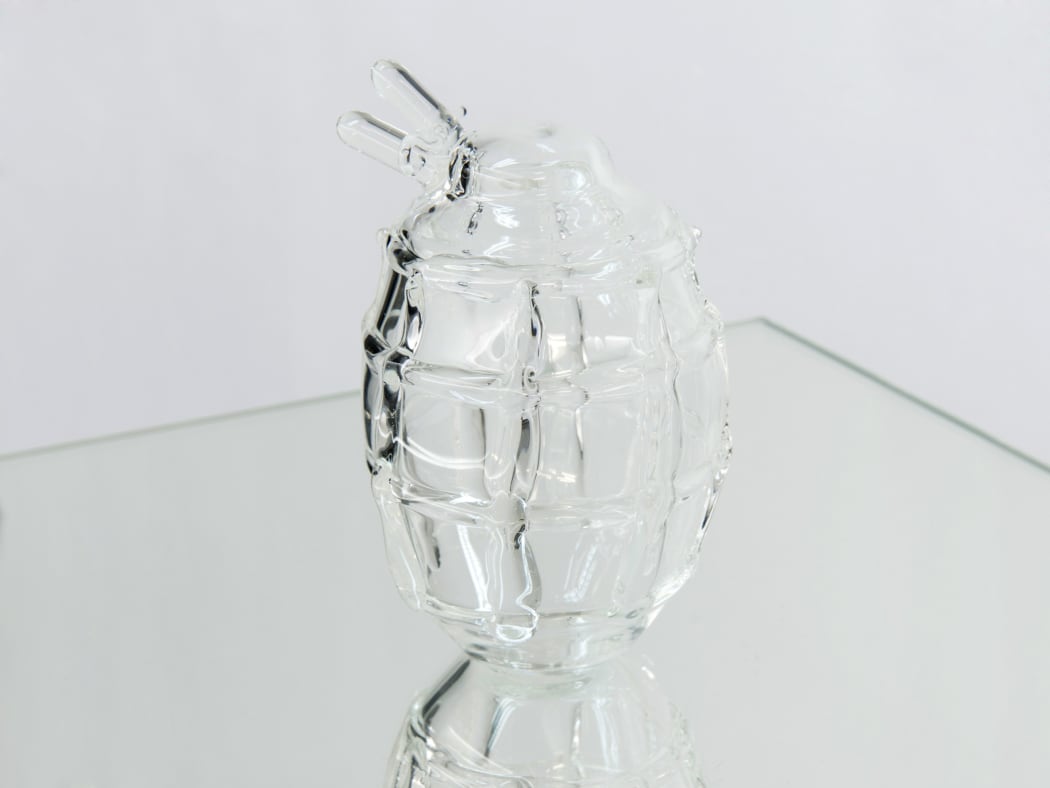 Avelino Sala, "MAD (Mutually assured destruction)", 2015.
Avelino Sala, "MAD (Mutually assured destruction)", 2015.To conspire in an unbreathable atmosphere
Fernando Castro FlórezFor almost a decade now, we face the sudden emergence of political parties that come out of the blue with no clear political agenda. A disintegration of the political space such as we knew it has taken place, and it would seem that even the storytelling is now obsolete given the fact that we may conduct the voters by means of algorithms. Twitter trolling and the "conspiracy-paranoid" agitation are more efficient than the drawing up of programs aiming to put an end to prevailing inequality. We know perfectly well that the "clash of civilisations" is politics at "the end of history". "The ethnic-religious conflicts –as Zizek points out in his book Like a Thief in Broad Daylight (Como un ladrón en pleno día, Ed. Anagrama, 2020)? are the form of struggle which fits global capitalism: in our age of 'post-politics', when politics proper is progressively replaced by expert social administration, the only remaining legitimate source of conflict is cultural tension (ethnic, religious)."
-
 Domènec, "Domestic", 2000.
Domènec, "Domestic", 2000.We face the unthinkable. A brief outline of green anarchism
Blanca de la TorreToday, before an unprecedented frozen landscape, we celebrate the hundredth anniversary of one of the main forerunners of ecologist thinking and the greatest exponent of what has been called "green anarchism": Murray Bookchin (January 14, 1921-July 30, 2006).
In a period of unparalleled climatic crisis, with extreme atmospheric phenomena such as those we are witnessing, which nevertheless does not appease climate-change denial, it seems to me that it is more pertinent than ever before to recuperate my Bookchinian philes, although, as Floreal Romero points out at the presentation of the last book released on the author, Murray Bookchin, por una ecología social y radical,2 Bookchin did not want any Bookchinians. -
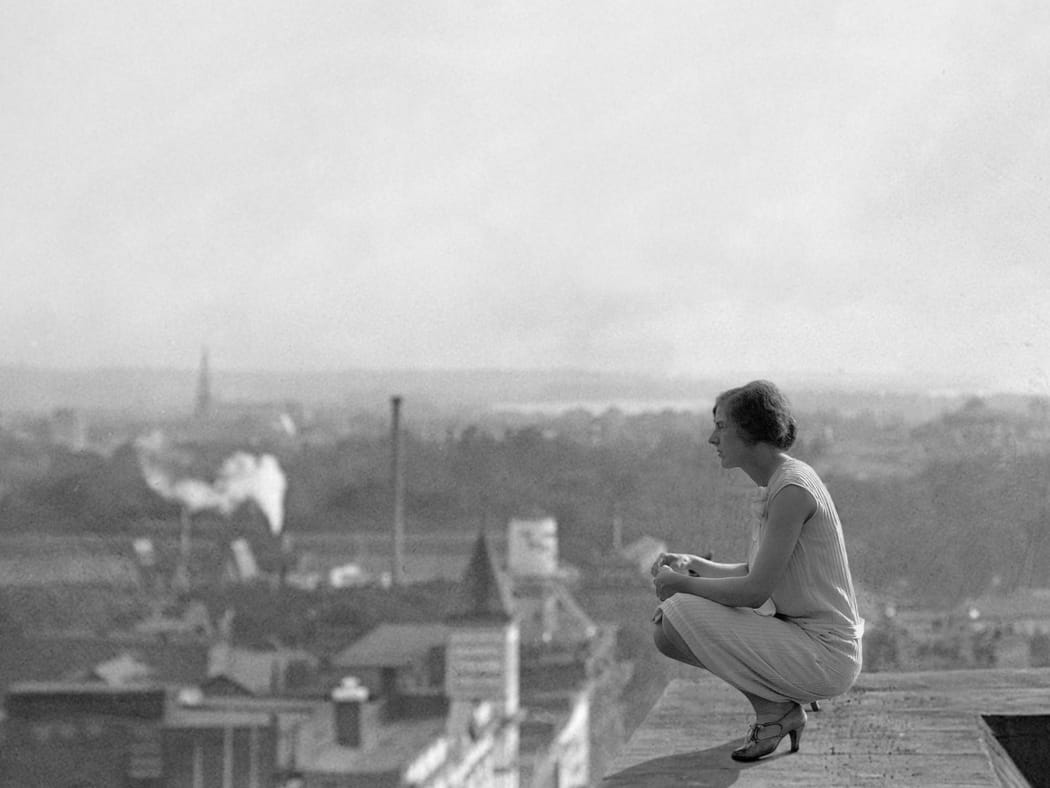 María María Acha-Kutscher, "Maybe 1", 2015.
María María Acha-Kutscher, "Maybe 1", 2015.Women's bodies are still battlegrounds
Semíramis González“Her body was the continuation of war.?
Las Malas, Camila Sosa Villada
Some days ago we took leave of a fateful year, 2020, that has made us rethink our entire vital structure, awaiting the new one as if we left the change to fate. We leave behind some months in which a global pandemic has brought to the forefront the cleavages of the capitalist system in which everything that cannot be commoditised becomes superfluous, precarious. Caregiving was mentioned by all after seeing the terrible images of elderly people dying in nursing homes, the forgotten ones of a cannibal system. Children closed at home, the almost impossibility of continuing to work, together with the co-responsibility of confinement, women who could not return to work (almost 20% of unemployed, four percent more than men) are some of the symptoms that have emerged due to this pandemic that express a non-egalitarian system. The face of precariousness is a woman, therefore it requires a feminist analysis.
-
 Núria Güell, "Stateless by Choice", 2015.
Núria Güell, "Stateless by Choice", 2015.When the artistic configures the political
Paco BarragánWhat is commonly accepted is that politics influences art, but the way from art to politics, id est, from the artistic to the political (as Hannah Arendt understood it) is poorly acknowledged.1
And yet both politicians and audiences receive images that stem from painting (The Last Supper), film (Battleship Potemkin), theater (Tartuffe), novels like Don Quixote and Les Misérables, and so on that conform that which is artistic and sensible. -
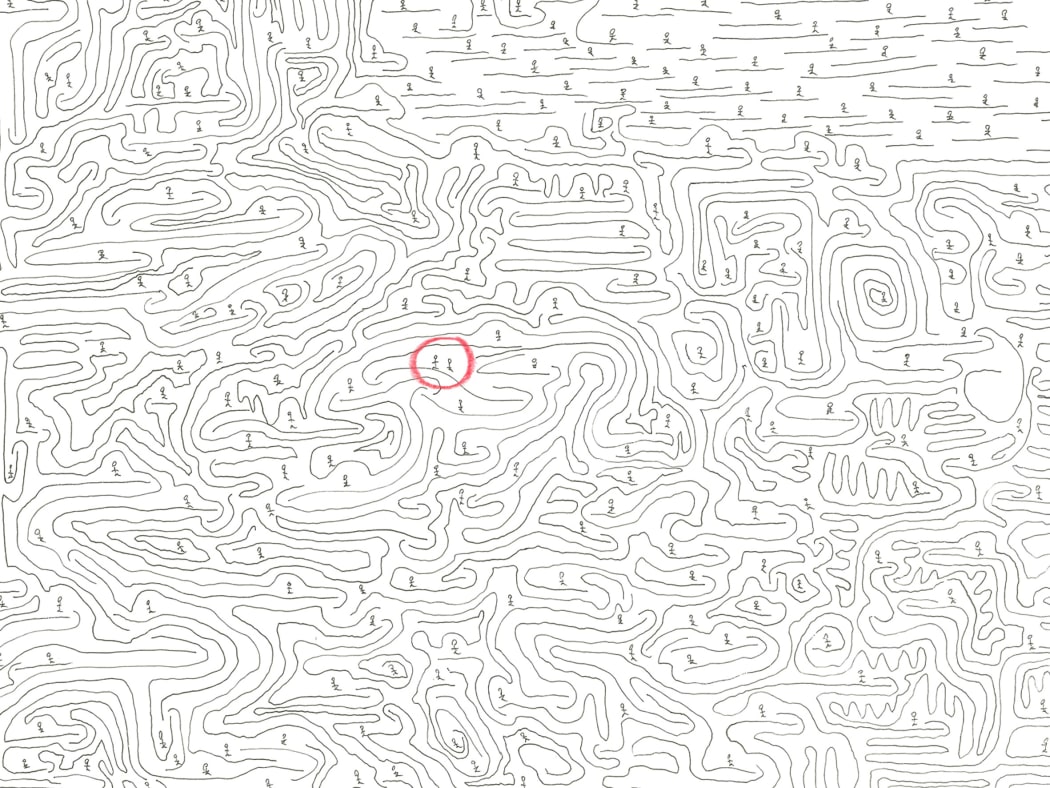 Pep Vidal, "Our own paths", 2020.
Pep Vidal, "Our own paths", 2020.Empathy
Montse Badia...And nature recovered its lost ground: fish in Venice's canals, deer in the middle of the roads, coyotes on the streets of San Francisco, wild plants pushing their way up through concrete, cleaner air and less noise pollution in cities... The idea was not to leave anyone behind... But it was only a parenthesis, a reminder not deep enough to really revisit the social-natural contract, to learn the animal's ability to adapt and adopt more complex intelligence models to once and for all assimilate that growth per se cannot be the aim.
-
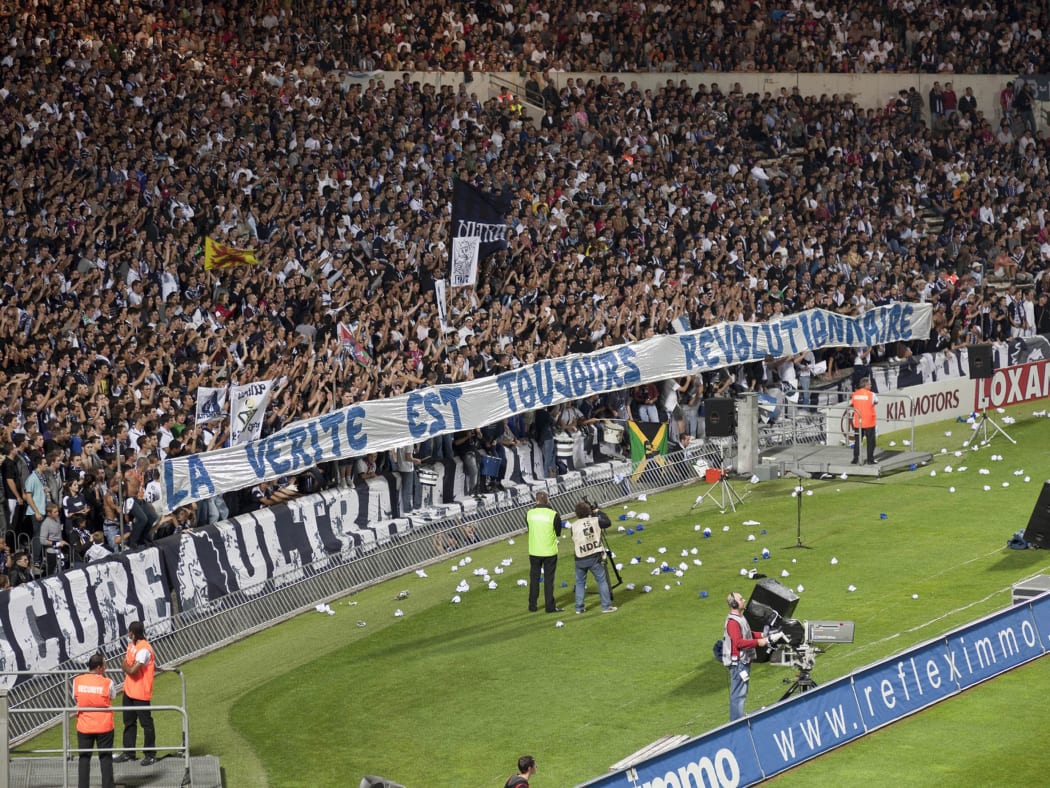 DEMOCRACIA, "La vérité est toujours révolutionnaire", 2009.
DEMOCRACIA, "La vérité est toujours révolutionnaire", 2009.Small Data: Trial/Error
Miguel Ángel SánchezTwenty-three years have gone by since I began to get obsessed. It was not the mere awakening of an interest, but rather the colonisation of gaze and thinking from which I have not been able to get free. Just a few certainties, but I could swear that the inability of moving away from this influence might be attributed to the impossibility to come across the ultimate reason justifying pertinences and needs. But in fact, why should I search for an ultimate reason? Why should I cling to reductionist certainties?
